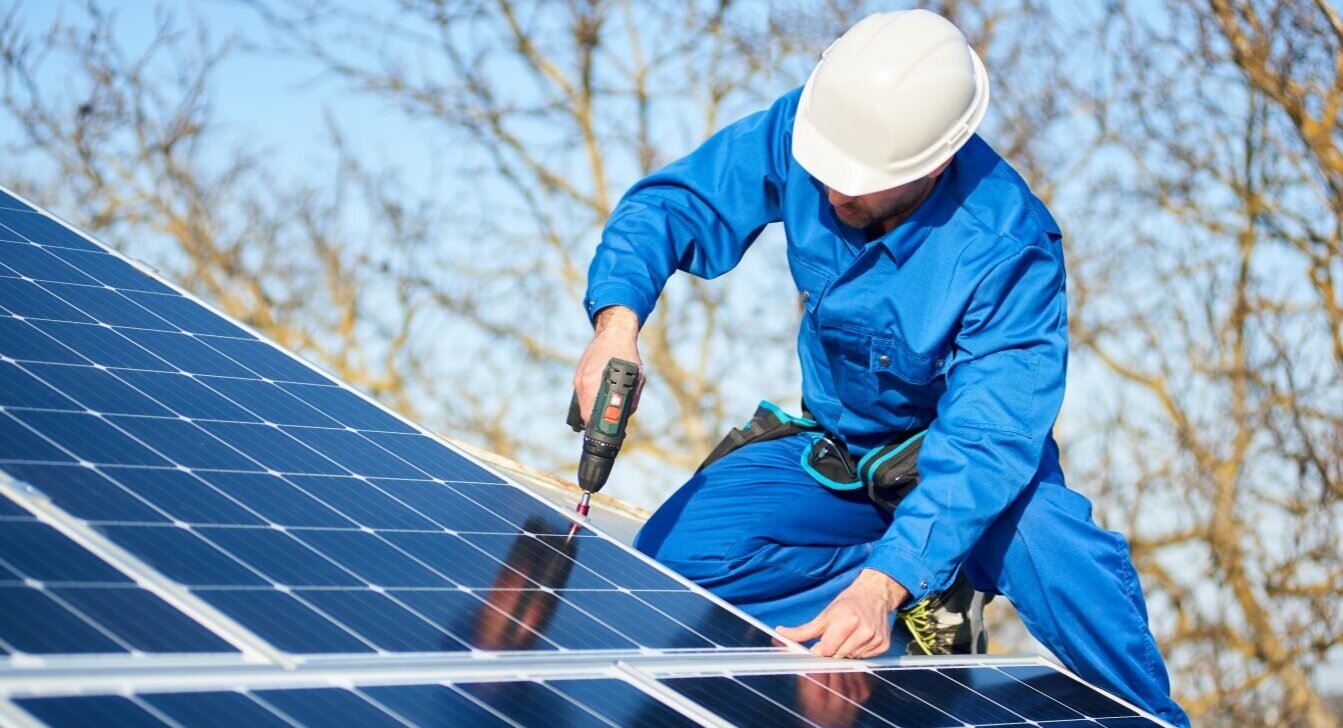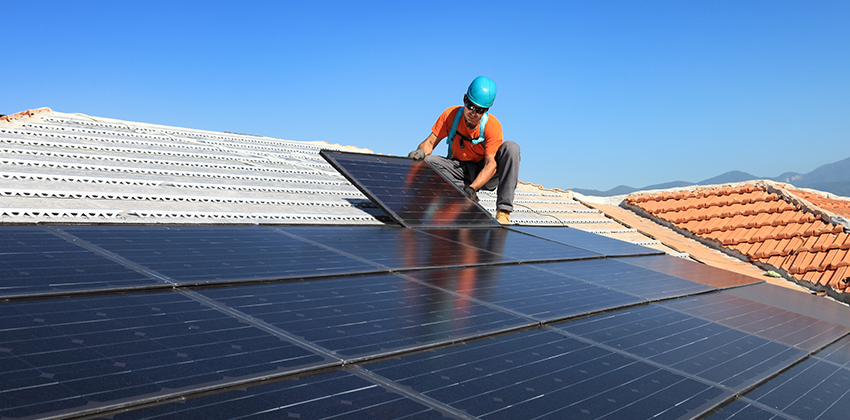Solar Home Systems: Large-Scale Photovoltaic Systems Can Significantly Reduce Energy Costs For Organizations
Unlocking the Advantages of Industrial Solar Panels

Have you ever questioned why more companies are turning towards business solar panels in their energy strategy? It's not just about going green-- though that's a compelling factor-- it's about utilizing a plentiful, complimentary resource that can significantly minimize functional costs over time. Think of a factory roof changed into a quiet, powerful energy generator, silently slicing monthly electrical power expenses while lowering carbon footprints.
Financial Advantages That Speak Volumes
Business solar panels use a suite of monetary benefits that can reshape a company's bottom line. Think about these bottom lines:
- Minimized Energy Expenses: Solar energy can offset a substantial portion of electrical power use, causing immediate savings.
- Roi (ROI): Though initial installation can be significant, the long-lasting savings typically surpass the upfront costs.
- Energy Cost Stability: Unlike nonrenewable fuel sources, solar power isn't based on market volatility.
- Increased Home Value: Buildings equipped with planetary systems tend to appraise higher in value.
Ecological Effect: More Than Simply a Buzzword
Think of the last time you saw a field Solar Panel Fitting Experts of photovoltaic panels gleaming under the sun. It's a sight that signifies hope and duty. Industrial solar panels drastically minimize greenhouse gas emissions, helping businesses line up with sustainability objectives without sacrificing performance.
- Lower carbon footprint
- Reduction in reliance on nonrenewable energy
- Support for corporate social responsibility initiatives
Functional Benefits That Often Go Undetected
Beyond the apparent financial and ecological perks, commercial solar panels use operational advantages that many overlook. For example, solar setups can provide energy independence, lowering vulnerability to power interruptions or energy rate hikes. This resilience can be a game-changer during peak demand periods or emergency situations.
| Benefit | Explanation |
|---|---|
| Energy Reliability | Guarantees a constant power supply, lessening downtime. |
| Low Upkeep | Industrial solar innovation requires very little maintenance. |
| Scalability | Systems can broaden as energy requires grow. |
What's the Catch?

Is there a disadvantage? Some might argue the in advance investment or area requirements. If you peer beyond the surface, the long-lasting advantages frequently eclipse these challenges. Think about it: in a world where energy costs unexpectedly change, wouldn't you desire a stable, renewable source? The response may be clearer than you believe.
Ultimately, commercial photovoltaic panels don't just power structures-- they empower companies to envision a future where earnings and world exist together harmoniously. Could this be the energy transformation your service has been waiting for?
Installation Process and Considerations
Picture standing atop an industrial rooftop, the sun blazing overhead, panels gleaming like fragments of a futuristic mosaic. The installation procedure for business solar panels is far from a simple rooftop decor-- it's an intricate symphony of engineering, accuracy, and foresight. One error in the installing angle or wiring layout can ripple into months of lost effectiveness and pricey repairs.
Secret Steps in Installation
- Website Evaluation: Before the first panel touches metal, a comprehensive evaluation of the website's sun exposure, roofing system structure, and shading patterns is crucial. Does the roof slope favor optimal solar gain? Are neighboring trees or structures casting unforeseeable shadows?
- System Style: Customizing the panel design to business's energy demands and roofing system restrictions includes innovative modeling tools. This is where theoretical energy output meets physical reality.
- Structural Reinforcement: Commercial roofs often need support to bear the weight and wind loads of the solar range. Not representing this can cause drooping or catastrophic failure during storms.
- Electrical Integration: Connecting the panels to the building's electrical system needs professional knowledge of load balancing and inverter positioning to minimize energy loss.
- Final Inspection and Screening: The last step ensures everything runs flawlessly, but it's also when concealed flaws frequently appear.
Essential Factors To Consider for Success
- Roof Condition and Longevity: Are you installing on a roofing that will last another twenty years? It's a good idea to change or repair the roof beforehand to prevent getting rid of panels too soon.
- Weight Circulation: Not all roofings are created equal. Understanding the load-bearing capacity avoids structural damage and keeps security.
- Orientation and Tilt Optimization: Even a slight deviation from the perfect panel angle can slash output by approximately 15%. Accuracy here pays dividends.
- Weather Patterns: How will local climate extremes-- hail, snow, or high winds-- effect the toughness and efficiency of your system?
- Circuitry Pathways: Preparation circuitry paths to lessen voltage drop and prevent electro-magnetic disturbance is a frequently neglected yet essential aspect.
Professional Tips for a Perfect Installation
| Suggestion | Why It Matters |
|---|---|
| Perform a shadow analysis at various times of day and year | Makes sure optimum sunshine capture and avoids unexpected dips in energy production |
| Usage micro-inverters rather of a single central inverter | Increases system resilience; one panel's underperformance will not drag down the whole range |
| Engage a structural engineer early while doing so | Avoids expensive surprises related to roofing integrity and compliance |
| Label all electrical components plainly | Speeds up repairing and future upgrades |
Have you ever wondered why some solar setups seem to defy the elements for decades, while others falter after a couple of seasons? It's the hidden attention to detail-- like verifying torque settings on installing hardware or adjusting inverter settings to local grid conditions-- that separates the exceptional from the average. Industrial photovoltaic panel installation is less about slapping panels on a roof and more about crafting a resistant, effective energy environment tailored to the special pulse of each organization.
Exploring the Varieties of Industrial Solar Panels
Picture walking into a large field of solar panels, each shining under the sun with a distinct function. Commercial photovoltaic panels aren't a one-size-fits-all option. They can be found in numerous flavors, each tailored to various energy requirements and setup environments. Ever wondered why some panels appear bulkier while others appear smooth and slim? Let's peel back the layers.
Monocrystalline Solar Panels: The Elegance of Effectiveness
These panels, crafted from a single crystal of silicon, look like a dark, nearly black canvas stretched throughout rooftops and solar farms. Their consistent appearance isn't simply visual-- it translates to greater performance rates, typically hovering around 20% or more. This indicates they transform a bigger portion of sunshine into electricity, making them perfect for areas where every square inch matters.
Their production is energy-intensive, akin to molding a diamond from rough stone. For companies with restricted roof space however high energy usage, monocrystalline panels frequently end up being the go-to option.
Polycrystalline Solar Panels: The Mosaic of Price
Image a mosaic, vibrant and speckled with various shades of blue. Polycrystalline panels are made from melted silicon fragments put into molds, leading to a somewhat rough, less uniform look. They usually offer slightly lower performance-- around 15-17%-- but their manufacturing process is less inefficient and more cost-efficient.
When spending plan restrictions loom big, and space is less of a premium, these panels strike a fine balance in between in advance financial investment and performance.
Thin-Film Solar Panels: The Light-weight Contenders
Ever seen photovoltaic panels that resemble versatile sheets rather than stiff panels? Thin-film technology deposits photovoltaic material onto substrates like glass or metal, developing light-weight, bendable panels. While their performance lags behind crystalline types-- often listed below 15%-- they master distinct applications where traditional panels falter.
Envision roofs with uncommon shapes or large exterior setups where weight and versatility dictate choices. Thin-film panels shine here, although they require more area and careful consideration of long-term output deterioration.
Secret Considerations for Business Setups
- Energy output per square foot: Vital for maximizing power in constrained spaces.
- Sturdiness: Panels withstand weather condition extremes; product composition impacts life expectancy.
- Temperature level coefficient: Crucial in hot environments as some panels lose efficiency when temperature levels increase.
- Installation complexity: Thin-film panels can minimize structural load however might make complex circuitry.
Insider Tips for Picking the Right Panel Type
- Assess your roofing system's load-bearing capability before choosing much heavier monocrystalline selections.
- Think about the angle and orientation of your setup website; some panels perform much better under diffuse light.
- Look beyond effectiveness numbers-- element in destruction rates and service warranty terms.
- Engage in early dialogue with engineers about prospective shading concerns that can drastically decrease output.
In the quest for the ideal business photovoltaic panel, the devil is truly in the information. Are you all set to harness the sun's power with accuracy instead of uncertainty?
Ecological Effect and Energy Cost Savings of Commercial Solar Panels
Envision a huge roof, once a barren stretch of asphalt, now gleaming with rows of business photovoltaic panels. This transformation isn't simply aesthetic; it's an effective declaration against the unrelenting usage of fossil fuels. Industrial solar selections can slash carbon footprints in manner ins which might amaze even experienced energy experts. However what does that really mean for the environment and your bottom line?
Carbon Footprint Decrease: Beyond the Numbers
Every kilowatt-hour produced by photovoltaic panels represents a tiny triumph against greenhouse gas emissions. On a bigger scale, a commercial facility equipped with solar can lower CO2 emissions by heaps annually-- equivalent to planting numerous trees. Yet, the true impact extends beyond simple statistics. Consider the causal sequence: less emissions mean cleaner air, healthier neighborhoods, and a more steady climate.
Energy Effectiveness: The Quiet Game-Changer
Performance in solar innovation has jumped forward, however even the most innovative panels face environmental difficulties throughout manufacturing. What frequently gets away attention is how smart system style can alleviate these issues, maximizing energy output while decreasing eco-friendly disturbance. For instance, orienting panels with precision and incorporating energy storage services can change variable sunlight into stable power, cutting reliance on grid electricity.
Specialist Tips for Maximizing Energy Cost Savings
- Optimize tilt and orientation: Even a few degrees can affect efficiency by up to 15%.
- Incorporate clever inverters: They improve grid compatibility and reduce energy losses.
- Take advantage of energy management systems: Real-time tracking identifies ineffectiveness before they escalate.
- Scale gradually: Phased setups permit adaptation to developing energy needs without squandering resources.
Environmental Compromises and Long-Term Vision
Photovoltaic panel do not derive from thin air; their production includes rare minerals and energy-intensive processes. This truth pushes stakeholders to think beyond immediate gains. What if end-of-life recycling for panels were structured industry-wide? The capacity for circular economy concepts to improve the solar sector is tremendous, appealing even higher environmental dividends in the future.
Quantifying Impact: A Quick Recommendation Table
| Metric | Common Yearly Commercial Solar Output | Equivalent Environmental Benefit |
|---|---|---|
| Energy Produced (kWh) | 500,000 | Powering ~ 45 average homes for a year |
| CO2 Emissions Prevented (lots) | 350 | Planting ~ 300 fully grown trees |
| Energy Expense Savings | ~$ 40,000 | Reinvestment into sustainable operations |
So, when weighing the environmental impact of commercial photovoltaic panels, ask yourself: are you prepared to picture energy not just as an utility, however as a catalyst for ecological renewal? The response forms how organizations harness the sun's power today-- and tomorrow.